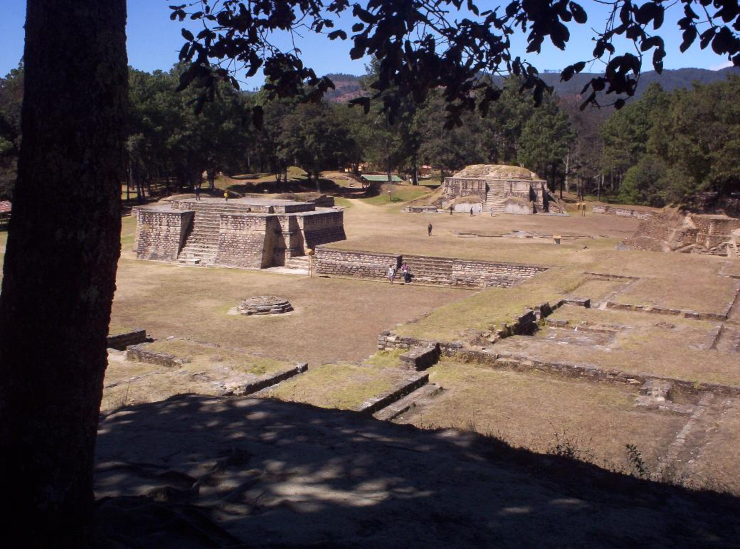Developer Diary, Kaqchikel Rebellion
In keeping with this month’s accidental theme of oppressed populations telling colonizers where they can stuff their power and authority—a lot of the Caribbean celebrated various Emancipation Days early in the month, too, before the month’s first developer diary post—today marks the 499th anniversary of the Kaqchikel Rebellion. As the Spanish invaded modern-day Guatemala, they forged a handful of alliances, particularly with the Kaqchikel.
When a priest claimed that the Kaqchikel would inevitably destroy Spain, the Kaqchikel abandoned their alliance and joined the defense, which largely stalled Spanish advances for about six years. Strip that story of its religious and maybe superstitious trappings, and consider that it only took one person to make an entire population rethink what side of history they wanted to stand on.

And with that, let’s talk project work.
Entropy Arbitrage Newsletter
For those of you interested in such things, I’ll have the next issue of the Entropy Arbitrage newsletter ready to go on Saturday the second.
If you have signed up on Mailchimp, I still don’t quite trust the company, then you’ll get the e-mail on Saturday. If you have subscribed on Buy Me a Coffee—at the link in the previous paragraph, click the Follow button to the upper-right of the page; no money will change hands—you’ll get it on Tuesday morning, the fifth of September, because I never publish blog posts on Tuesdays, making that a nicer match than Saturdays.
What will you find inside? As always, you’ll find links to all the articles that I found interesting in my RSS feed or bookmarked, plus some analysis of blog traffic. For August, I revived people-search antics, wrote a piece on laptop shopping with no conclusions, discussed media consumption, and have some early-stage looks at two upcoming projects. If you’ve become a member on Buy Me a Coffee, then you can already see previews for some of that.
Notoboto
I focused the week on getting this functional. And while it certainly has a long way to go before I’d offer to let anybody else use it, Notoboto now at least lets me work with existing notes.
Specifically, it can now read and categorize the existing files, display them correctly in the editor, and writes out the file after the user (like myself) has made changes. Oh, and I also have the start of the code that will ultimately create new notes.
Included in this, you’ll find what will probably remain the ugliest—and simultaneously least useful, for most people—code in the system. The parseCson() function turns the text of a CSON file into a Tcl dictionary object, while stringifyCson() takes the dictionary and turns it into CSON text.
Yes, yes. “CSON,” I hear you cry pleadingly in distress. Think of CSON as analogous to JSON—a format to “externalize” data from a (usually) JavaScript program for other programs to consume—but for CoffeeScript, because they wrote the original Boost Note using that ecosystem. “CoffeeScript,” I hear you wonder again? You can put CoffeeScript on the long list of projects aimed at improving and displace JavaScript.
At some point, by the way, I had convinced myself that Microsoft had backed CoffeeScript, at least initially. However, I can’t find any evidence of this. Most likely, I confused it with the much older Microsoft Coffee prank and Microsoft’s non-prank TypeScript that serves a comparable role to CoffeeScript.
At any rate, since few developers work with CoffeeScript, and therefore little software exists that writes CSON, you won’t find much non-JavaScript support for CSON. And amusingly (but also frustratingly), when I checked with AI’s “usual suspects,” they all insisted that I try Tcl’s cson package. And when I pointed out that I couldn’t find one, they all claimed that they suggested it as an example of what I could do, if the library existed. 🤯
Next
This week, I expect to continue on with Notoboto, because I have it closer to where I want it than I would have expected. After I finish new-note creation, I need to make sure that I manage the note list properly when the user updates a note, add functionality to the remaining buttons, and work out how to only show the buttons that I care about at any given time.
And while I may have mentioned this last week, at some point, I should seriously consider whether I want to retain the CSON-formatted notes at all. Instead of supporting a parser and externalizer that probably don’t completely conform to the official specification, this could export the notes to a format that looks more like the Markdown source of these blog posts, where the metadata looks something like a YAML file, followed by the Markdown content, and named after the title of the note instead of a UUID.
Credits: The header image is Iximché by Colocho, released into the public domain by the photographer.
No webmentions were found.
By commenting, you agree to follow the blog's Code of Conduct and that your comment is released under the same license as the rest of the blog. Or do you not like comments sections? Continue the conversation in the #entropy-arbitrage chatroom on Matrix…
Tags: programming project devjournal John Colagioia
John Colagioia